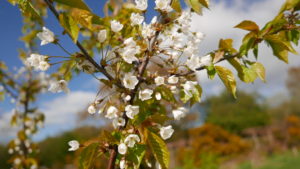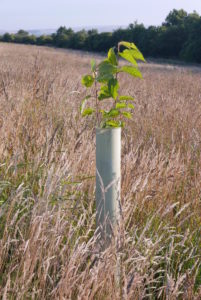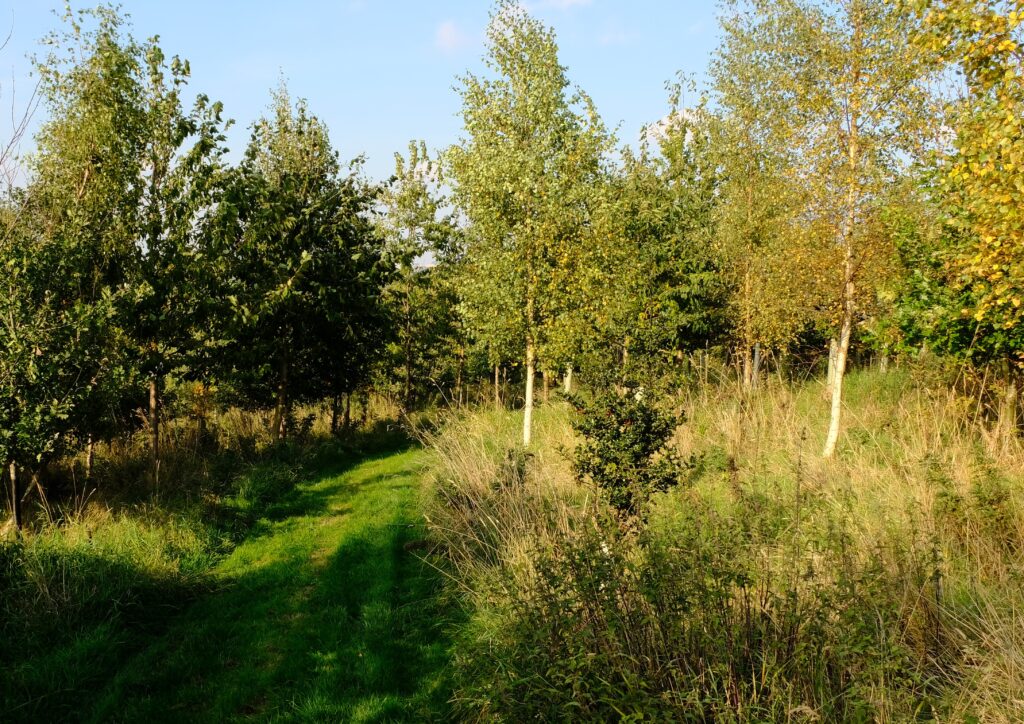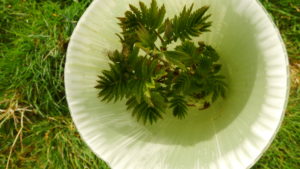 See here for latest posts and other woodland news.. and don’t miss Sarah Annesley’s Instagram Thistle Wood Diaries.
See here for latest posts and other woodland news.. and don’t miss Sarah Annesley’s Instagram Thistle Wood Diaries.
Thistle wood was planted in 2013, and I acquired it a year later. It consists of a strip of former pasture land sitting at about 450ft above sea level on the south side of the Derwent Valley in County Durham, looking across towards the North Pennines and the rolling wooded hills of south Northumberland. There are 8 acres of trees, about 4500 of them in all: a mix of oak, wild cherry, silver birch, hazelnut, Scots pine and a alder. For the first two years, because of inadequate protection, the young trees were very heavily browsed by roe deer, and it has been a bit of a battle to keep them out ever since. I have added more tree protection and deer fencing and I am in the process of repairing and restoring a hedge along one side of the  plantation.
plantation.
One of the first jobs was to create a system of rides or tracks, not just to improve the access but also to create beautiful walks and to enhance the biodiversity of the plantation. Ride management is one of the most important aspects of woodland management – and south-facing rides, managed properly, provide rich and productive environments for insects and birds. I am planting mine up with fruit bushes and fruit and nut trees to provide a sort of sloping ramp of vegetation.
In winter 2017 I dug a pond and blocked up the old field drain that runs beneath it. Many invertebrates quickly colonised it, including damsel and dragonflies and fresh water molluscs. It has already proved a mecca for birds and mammals (a nursing doe included) and I keep an eye on it with a camera trap.
 Slowly, more and more of the recovering saplings have reached head height and eventually the marvellous views across the valley will become obscure, the soil and habitat will take on characteristics of a wood, and the landscape will evolve into something magical and productive. The grass beneath the trees will slowly die back and woodland flowers will start to colonise.
Slowly, more and more of the recovering saplings have reached head height and eventually the marvellous views across the valley will become obscure, the soil and habitat will take on characteristics of a wood, and the landscape will evolve into something magical and productive. The grass beneath the trees will slowly die back and woodland flowers will start to colonise.
All the damaged trees will eventually be coppiced, producing wood for fuel and for making useful things. In a few years we will be able to start making our own charcoal and I hope to be able to open the wood to the public a few times a year so that more people can enjoy it. Coppicing is an infinitely sustainable form of land use, a unique partnership between human and nature, providing endless useful products, diverse habitats and cycles of light and shade that many plants and animals are perfectly adapted to.
I have written three books about trees and woods. The first, the Wisdom of Trees, is now available in both hardback and paperback. The Little Book of Planting Trees, appeared in 2019; and Trees of Life was published in the same year. As the seasons change and the cycle of the woodsman’s work turns full circle, and as Thistle Wood continues its journey to becoming a real bona fide English native woodland, I have been recording progress in various blogs for Woods for the Trees, a non-profit organisation which I set up with two colleagues to put people and trees together.
As you’ll see from the picture below, as of Summer 2024 Thistle Wood is transformed. We have two wildlife ponds and at least two pairs of breeding owls regularly hunt here – barn owls and short-eared owls. Badgers, foxes, a hare, kestrels and red kites are often seen and the shade and leaf-fall of the trees is now suppressing grass cover, providing the beginnings of a true woodland soil.


